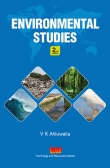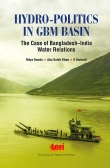Introduction to E-Waste Management
- Author(s): Lakshmi Raghupathy
- Size: 160 mm x 240 mm
- Pages: 350
- Binding: Hardback
- Publishing Status: Forthcoming
- Language: English
- ISBN: 9789386530196
- Cover Price:
Rs.625.00 / US $44.00
- Special Price: Rs. 562.00 / US $39.00
Book Details
With the availability of new technology, electronic equipment are discarded at regular intervals. These electronic equipment contain toxic and carcinogenic compounds that pose a threat to the environment. Introduction to E-Waste Management discusses types of e-waste and their characterization. The book details the global e-waste regulations such as Basel Convention and E-Waste Management Rules 2016. In addition, e-waste recycling and their environmentally sound management are discussed in detail. It also provides an overview of the business models for e-waste management. The other topics discussed include restrictions on use of hazardous substances, e-waste handling, sustainable e-waste management among others.
Table of Contents
INTRODUCTION TO E-WASTE MANAGEMENT
Chapter 1 – INTRODUCTION
1.1 Preamble
1.2 What is e-waste
1.3 E-waste Sources and generation
1.4 Growth of Electrical and Electronics Industry in India
1.5 Global Context of e-waste Management
1.6 Indian Scenario on e-waste Management
Chapter 2 – E-WASTE
2.1 E-waste Definition
2.2 Classification of e-waste
2.3 Characterization of e-waste
Chapter 3 – REGULATORY FRAMEWORK
3.1 Global e-waste Regulations
3.2 Waste Electronics and Electrical Equipment (WEEE Directive 82)
3.3 International norms – Basel Convention
3.4 Evolution of e-waste regulations in India
3.5 E-waste Management Rules 2016 (amendments to 2011 Rules)
3.6 Regulatory Compliance Mechanisms
3.7 E-waste Management Guidelines
Chapter 4 – EXTENDED PRODUCER RESPONSIBILITY (EPR)
4.1 E-waste – A post Consumer Waste
4.2 E-waste Value Chain
4.3 E-waste Collection Systems
4.4 Extended Producer Responsibility (EPR)
4.5 Collective Responsibility
4.6 Producer Responsible Organization (PRO)
Chapter 5 – E-WASTE HANDLING
5.1 Characterization & Classification
5.2 Packaging and Labelling
5.3 Transportation
5.4 Storage
5.6 Safety in Handling – Precautionary Principles
Chapter 6 – RESTRICTIONS ON USE OF HAZARDOUS SUBSTANCES (ROHS)
6.1 Hazardous substances in e-waste
6.2 Global ROHS compliances (ROHS Directive 84)
6.3 ROHS compliance requirements in India
Chapter 7 – E-WASTE RECYCLING
7.1 E-waste Recycling Operations
7.2 Dismantling & Segregation
7.3 Recycling & Recovery
7.4 Recycling Technologies
7.5 E-waste recycling practices in India & challenges
7.6 Role of informal sector in e-waste management
7.7 Procedures for setting up e-waste recycling facilities
Chapter 8 – ENVIRONMENTALLY SOUND MANAGEMENT OF E-WASTE
8.1 Environmentally Sound Management (ESM)
8.2 Environmentally Sound Technologies (EST)
8.3 Approach towards effective management systems for e-waste
8.4 Strategic planning for e-waste management system
8.5 Viable Models for e-waste Management Systems
Chapter 9 – ENVIRONMENT AND SOCIAL ISSUES
9.1 Stakeholders in e-waste value chain
9.2 Environmental Health Issues
9.3 Informal Sector Engagement
9.4 Formalization of Informal Sector
9.5 Skill Development
9.6 Adoption of Safe Practices
9.7 Public Awareness
Chapter 10 – CASE STUDIES
10.1 Global Case studies – [EU, Japan, China]
10.2 Indian Case studies – [Bengaluru, Mumbai, Hyderabad]
10.3 Success Stories in four cities
10.4 Comparative Models – India and EU or any other
Chapter 11 – BUSINESS MODELS FOR E-WASTE MANAGEMENT
11.1 Economics of E-waste Recycling
11.2 Channelization mechanisms for e-waste
11.3 Financing mechanisms
11.4 Public Private Partnership
11.5 Parity in Import/export regulations
Chapter 12 – SUSTAINABILE E-WASTE MANAGEMENT
12.1 3R Principle of Reduce Reuse and Recycle
12.2 Resource Recovery
12.3 Circular Economy
12.4 Reduction in carbon emissions
12.5 Authorized repair and refurbishment
BIBLIOGRAPHY
INDEX
You may also like...
-
 Environmental Studies (Second Edition)
Regular Price 325.00
Special Price 293.00
Environmental Studies (Second Edition)
Regular Price 325.00
Special Price 293.00
-
 Hydro-politics in GBM Basin : The Case of Bangladesh-India Water Relations
Regular Price 595.00
Special Price 535.00
Hydro-politics in GBM Basin : The Case of Bangladesh-India Water Relations
Regular Price 595.00
Special Price 535.00
-
 The Land of the Setting Sun & Other Nature Tales
Regular Price 250.00
Special Price 225.00
The Land of the Setting Sun & Other Nature Tales
Regular Price 250.00
Special Price 225.00
-
 Making every drop count
Regular Price 75.00
Special Price 68.00
Making every drop count
Regular Price 75.00
Special Price 68.00

